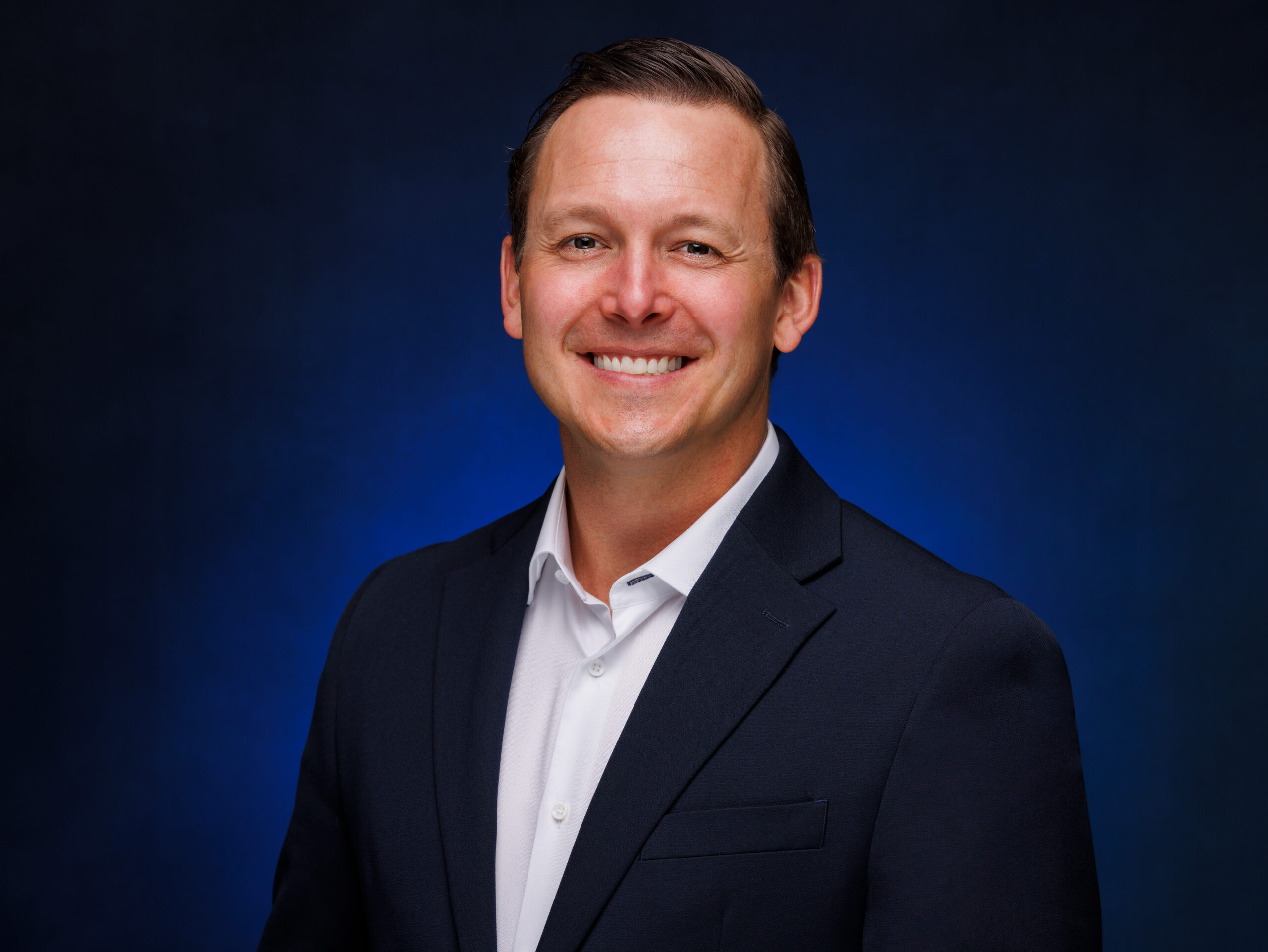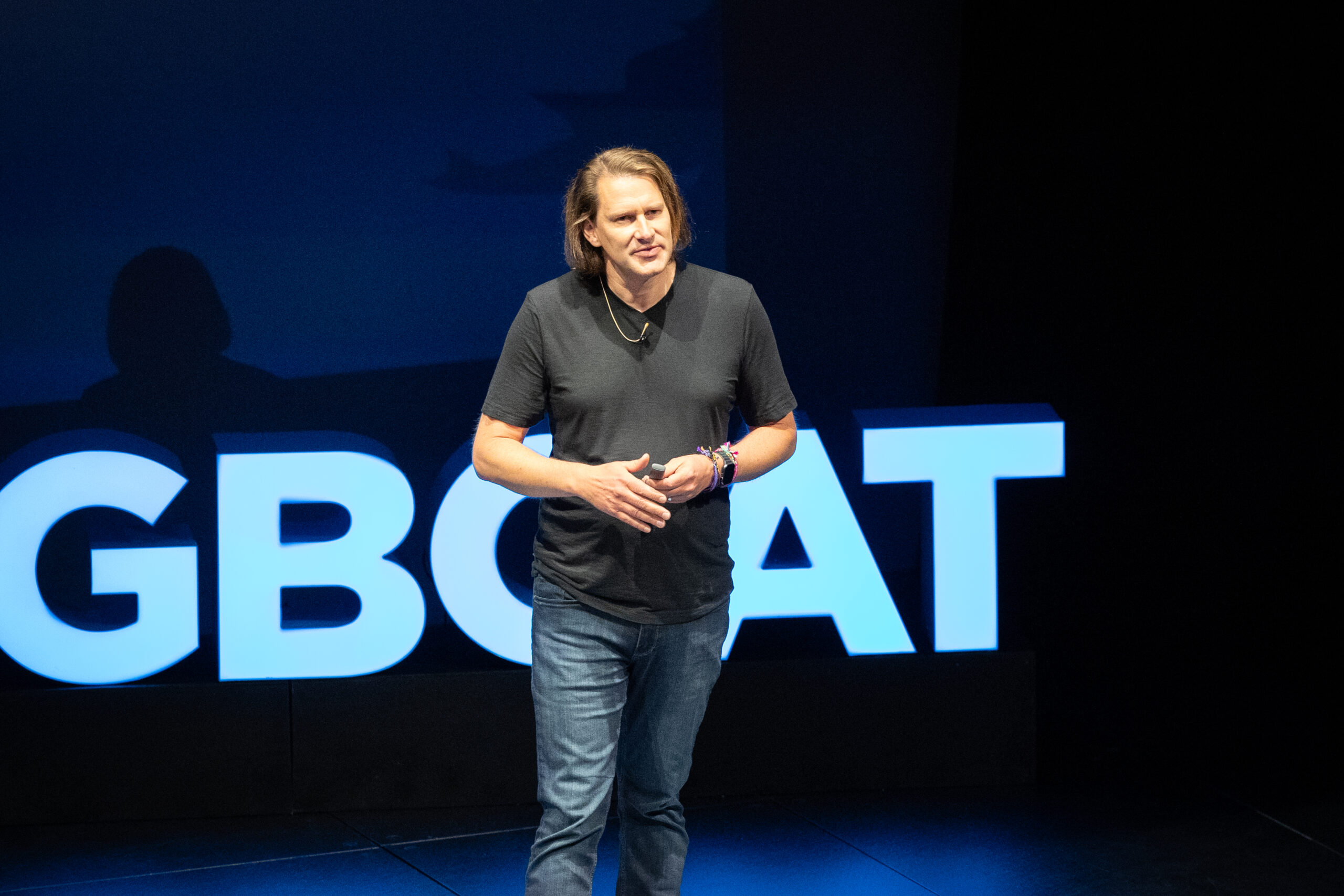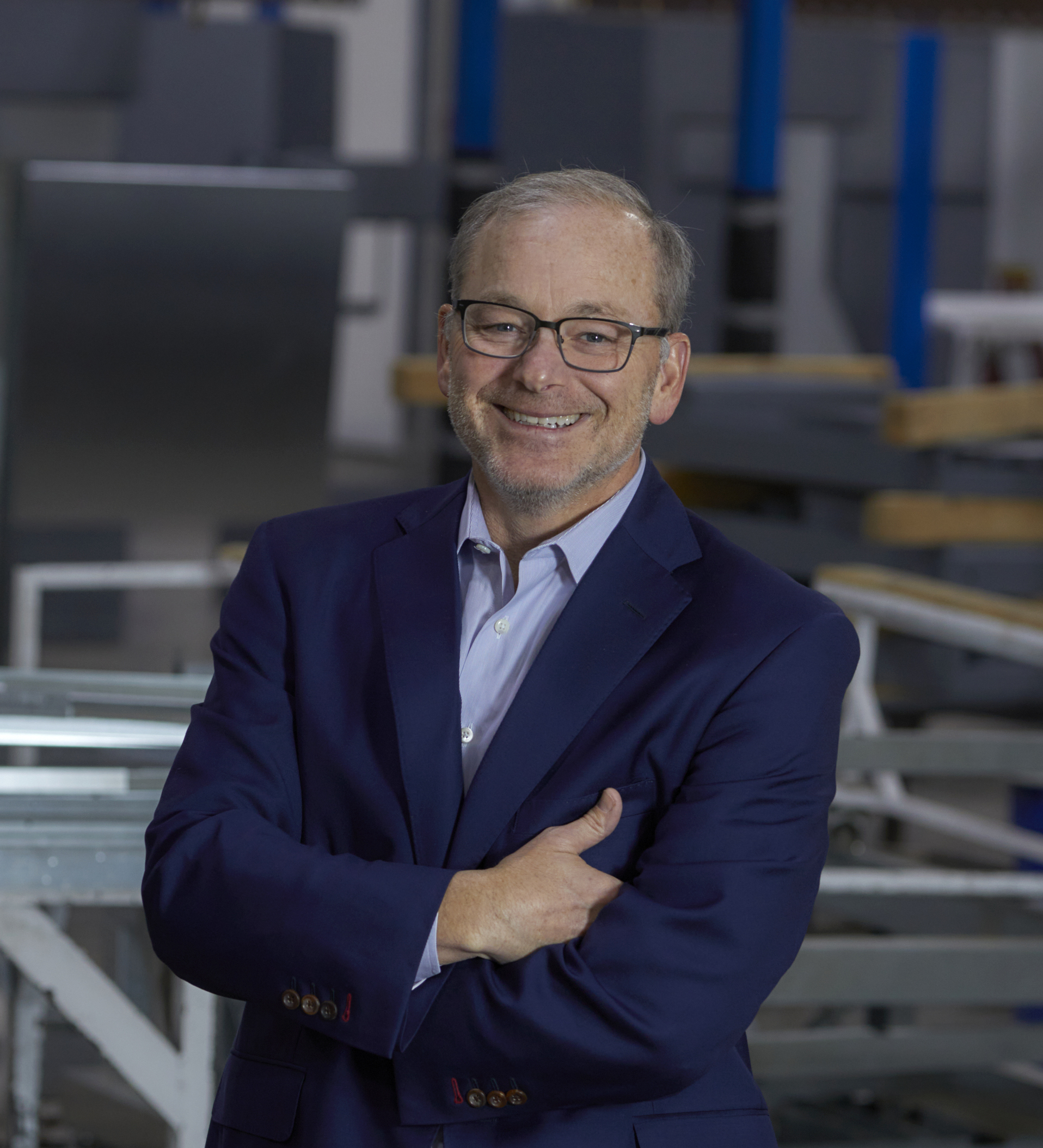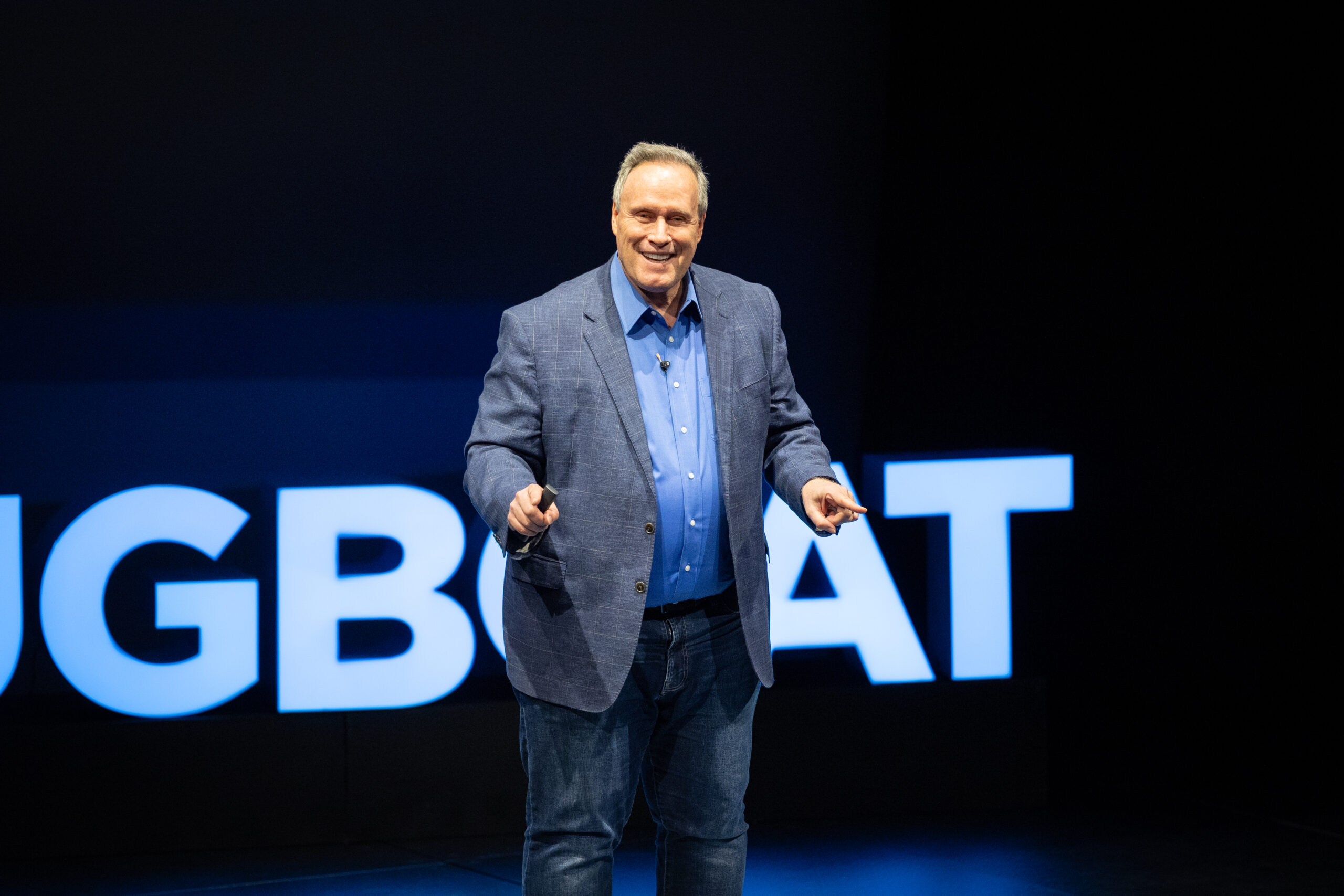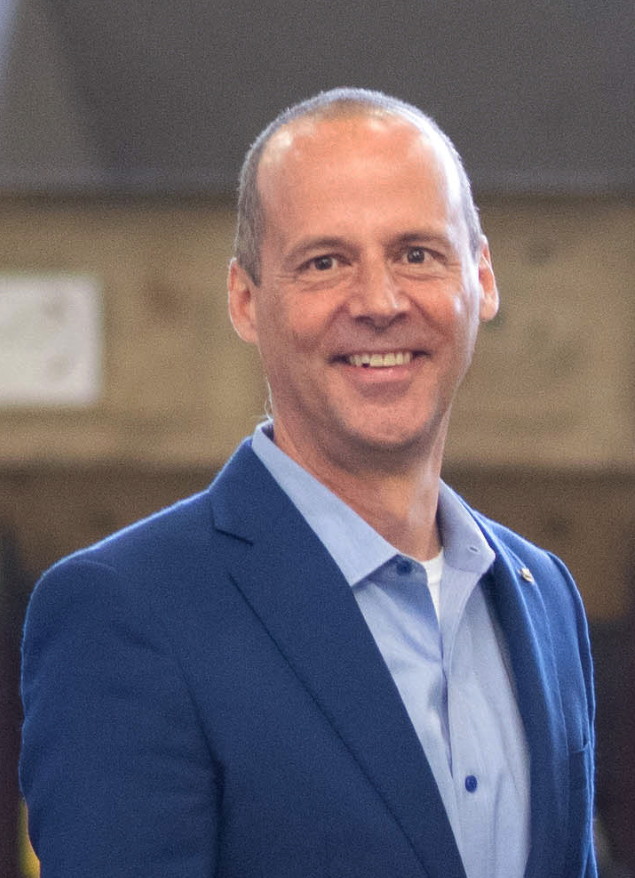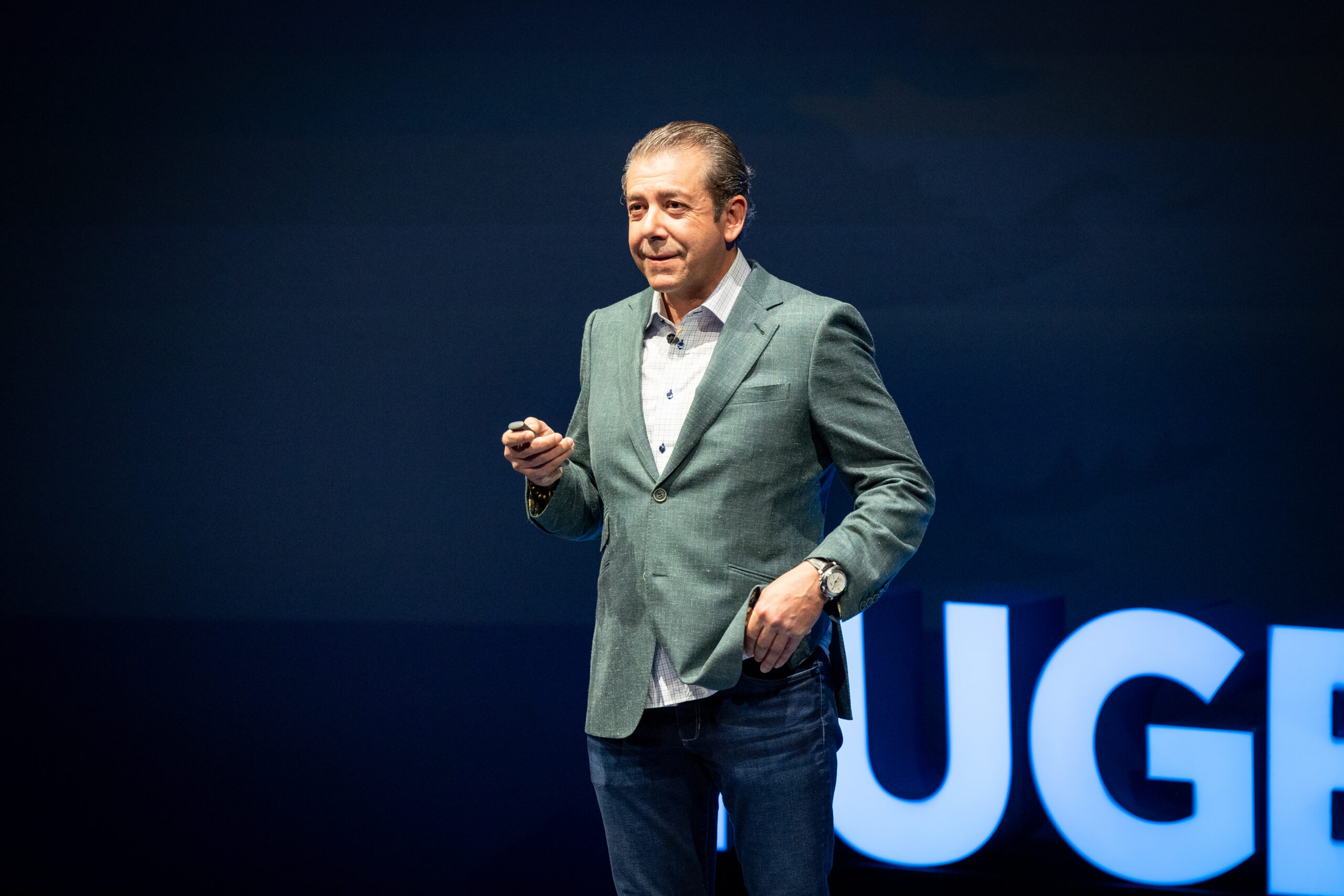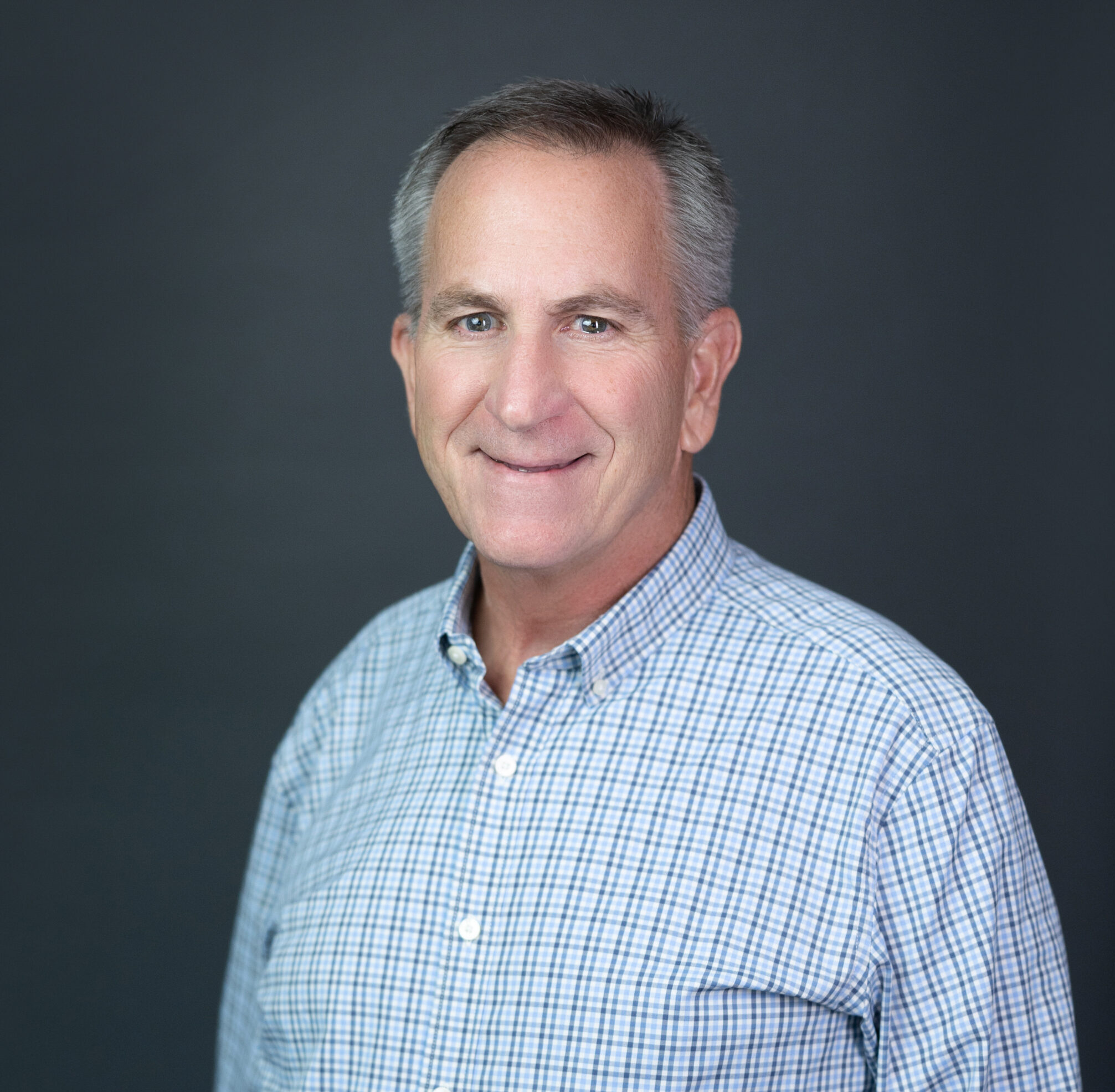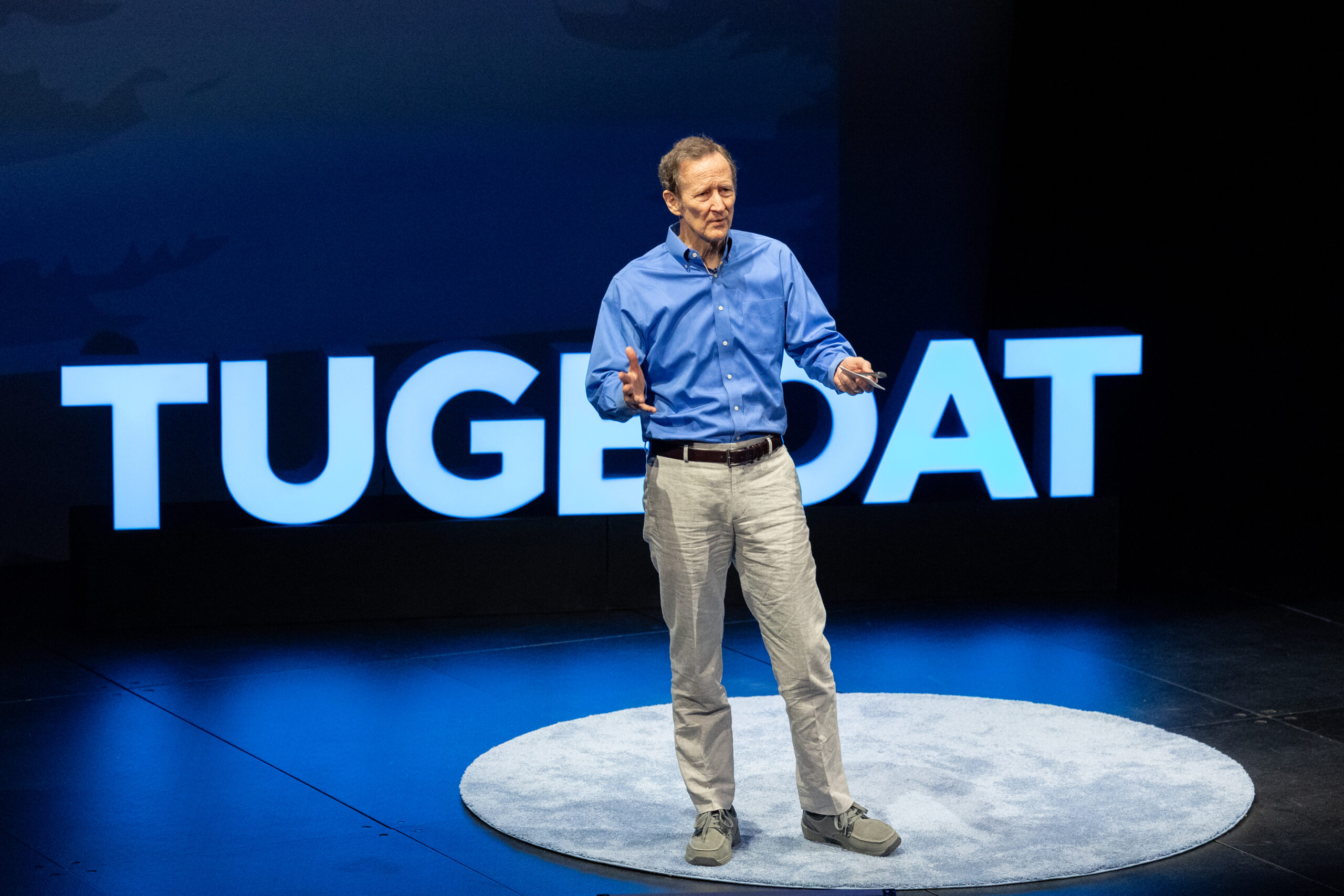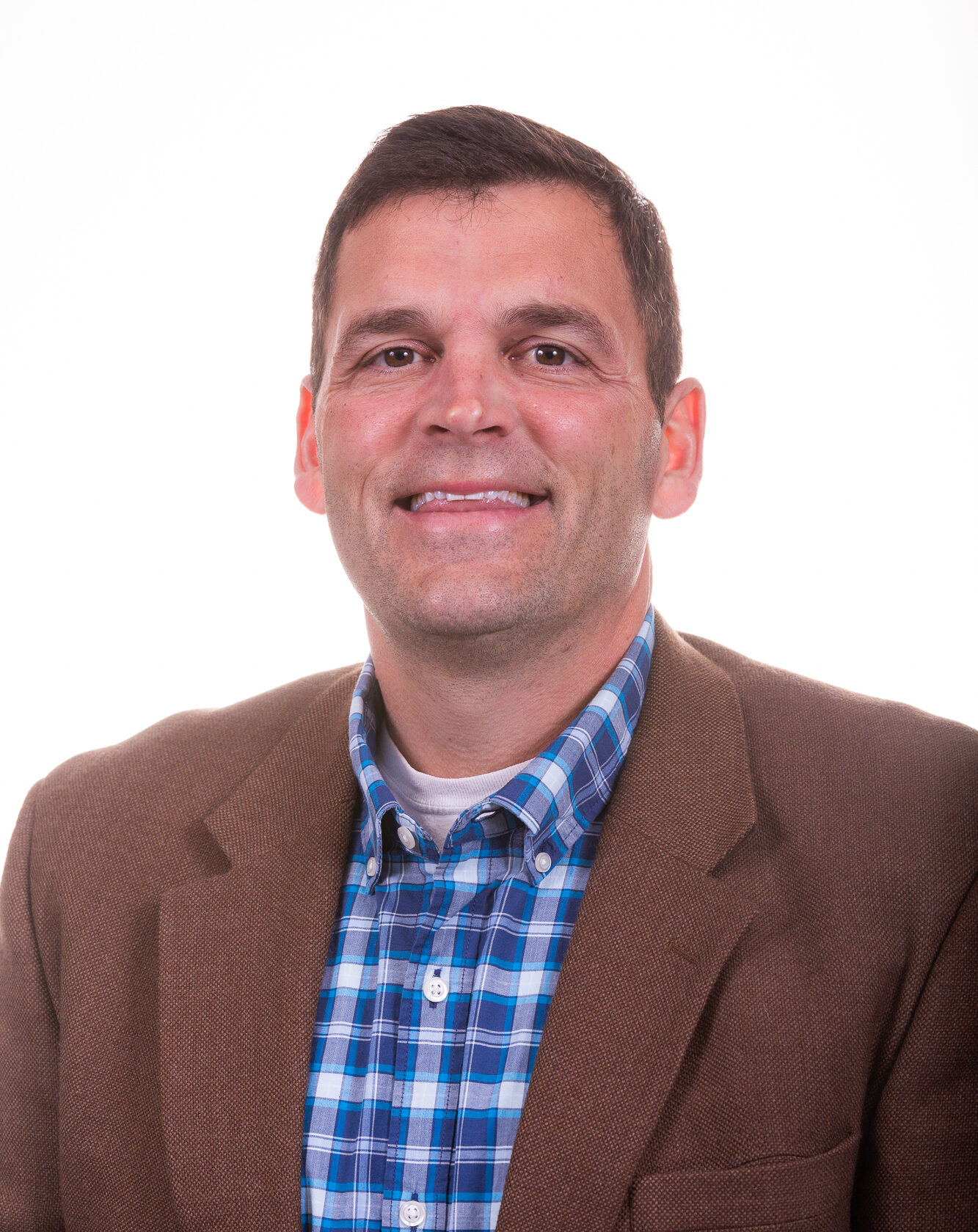Uniting in Evergreen Values
Dear Friend of Tugboat Institute®,
Coming off several very difficult years filled with unexpected challenges and unforeseeable obstacles post-COVID, our members largely saw a more predictable business environment in 2023. Supply chain woes improved, hiring, while still challenging, became possible again in many industries, and inflation has started to cool. Not all businesses weathered this chaos as well as Evergreen® businesses; because of our discipline and long-term mindset, most of our members not only survived the recent wild ride, but in most cases, capitalized on opportunities it presented. It was a year that confirmed the strong position of the Evergreen company in an ever-changing world.
Outside of the business world, on the other hand, 2023 saw a rise in conflict and discord worldwide. From the tense national political climate to the terrible, tragic conflicts overseas, the things that separate us can often overshadow those that unite us, as Americans and as humans. This is a terrible shame.
Here at Tugboat Institute, we are of course neither unaware of nor indifferent to this reality. It affects us, it affects our members, and it is devastatingly sad. As an organization, we firmly condemn violence, hate, terrorism, and prejudice in all forms. However, in the face of all this distress and conflict, and heading into another tough presidential election year in 2024, we have taken the opportunity to re-examine and update our Member Pledge. Among other things, it includes a commitment to refraining from introducing contentious political topics into our community that could polarize our members. We are not putting our heads in the sand. Rather, we are re-iterating our stance, established at our founding ten years ago, to support each and every one of our members in their Evergreen company journeys, and focus on what unites us, which far outweighs whatever may divide us.
At the end of 2023, our membership includes 265 Evergreen companies, spans 25 major industries, draws from Mexico, Canada, and 36 states in the US, includes a variety of ownership structures, and includes businesses with revenues from $6M to $26B. This represents an incredible range of companies. How do we find strength and common cause amid such a range?
First of all, despite these differences, Tugboat members all share the burden and privilege of leadership. They share the responsibility of stewarding, building, protecting, and growing an organization on which many others depend. As such, they can find and have found myriad ways to learn from and support each other. I have sat at dinner at one of our events and participated in a conversation between a second-generation leader of a well-established company and a founder struggling to make the leap across no-man’s land and to imagine how their company makes it from ten years to 100. Not only did the former have helpful and relevant advice for the latter in that moment, but they also made the commitment to stay in touch and engage in conversation on an ongoing basis, to ensure that the founder had the support they needed to persevere. I have watched a group of members from completely different industries who simply happen to live in the same geographical area, greet their forum-mates at an event and reference the personal and professional challenges they have helped each other face and surmount. And I have hosted Tugboat Seminars and Tugboat Talks where members at one stage of their professional careers have shared invaluable advice, perspective, and wisdom with their peers who, no matter where they are in their own leadership journey, can find something to take away and bring back to their companies and lives.
Secondly, beyond the shared leadership that unites our members, we are inextricably and powerfully connected through our shared belief in the Evergreen 7Ps® principles. Evergreen leaders don’t think like other leaders, who might be building toward a quick exit or trying to maximize growth at all costs, to make the quarter, or to achieve an IPO. Evergreen leaders share a long-term mindset, they share a deep belief in purpose, and they share the conviction that the best path to being successful in business is by treating people well and focusing on doing the right thing today and in the future. The profits that follow, and that are of course very important, are the powerful tool through which they can continue to effect change and increase their positive impact on the world. Shareholder wealth generation is not the ultimate goal, but rather a natural byproduct of the long-term compounding of retained capital in the business.
Among our members, we are privileged to include men and women of a variety of races and religions, with a variety of educational and cultural backgrounds, and with life experiences that vary in profound and important ways. Yet we have never for a second seen this variety as anything but an strength. By committing to keeping divisive topics out of Tugboat, we are not turning a blind eye. Tugboat is a community that is grounded in trust, in our shared Evergreen company values, in our shared humanity, and in our shared belief that we have much more in common than not. What makes us special is our ability to share, listen, and learn from each other with authentic curiosity and without judgment, which takes intentional practice. We recognize that good lives inside each of us, and that when we help each other make our Evergreen companies more mature and stronger, it benefits all of the employees, customers, suppliers, families, owners, and communities touched by our peers and us.
Thank you for supporting this incredible, trusted community, and I wish you, and our world, peace and prosperity in 2024.
Warmly,
Dave Whorton
CEO & Founder of Tugboat Institute
Navigating the Regulatory Landscape
California stands as both a land of opportunity and a labyrinth of regulations. Companies operating within the state must grapple with an intricate web of rules governing everything from labor practices to environmental standards. Betts Company has existed in California since 1868, when my great-great-great-grandfather, William Betts, founded the company in San Francisco. Today, the company has diversified and grown a great deal. Still based in California, we compete against companies all over the country, many of whom exist in an environment that is far less regulated than ours. Yet we are an industry leader.
Labor laws in California are far more stringent than most of the country. While labor laws were initially intended to protect employees, California’s current labor laws pose significant hurdles to businesses statewide. The Private Attorneys General Act (PAGA) is a good example of this. PAGA authorizes employees to file civil lawsuits on behalf of not just themselves, but also on the behalf of their coworkers for State of California Labor Code violations which penalizes the employer. The main problem with laws like these is that they assume ill intent on the part of employers. They are susceptible to abuse and can become punitively expensive for businesses across industries. Further, they shift and evolve frequently, which requires constant attention and policy adjustments on the employer’s side, which is also expensive. Navigating complex labor laws, ensuring compliance with meal and rest breaks, accurate pay stubs, and addressing new mandates like California's paid sick leave are daily concerns.
In addition to labor laws and regulations, California is among the most regulated states when it comes to environmental issues, and specifically, emissions. Here again the initial intention was laudable: to ensure that we respect and protect our natural environment. One example is the recent regulations created by California Air Resource Board (CARB) that are affecting the heavy-duty truck industry. But since California is often the first to mandate certain reforms and new policies, it is up to the businesses in the state to scramble to adjust to them continually.
How do we, at Betts, manage to thrive and remain competitive in such an environment? In several ways. First, we are a Certified Evergreen® company, and we believe in putting People First. As a baseline, therefore, we do a great deal to ensure that our employees are happy, fulfilled, and treated fairly, thus minimizing the cost of frivolous lawsuits brought through PAGA and similar regulations.
Second, we work cooperatively with many businesses in our industry and region to create and support systems and organizations that protect the rights of employees, but without putting the burden on employers. We founded, for example, the San Joaquin Valley Manufacturing Alliance, which aims to support the Valley’s $19.3B manufacturing industry by helping develop and train the workforce. We are also part of an organization called Heartland Compass, which provides resources for employees of employer partners. Heartland can help employees with all sorts of problems, including finding resources to pay for car repairs so they can get to work, finding the right advocates to start the process of seeking US citizenship, and securing a case manager and hospice care for an ailing parent. In this way, we are helping create a landscape where employees do have access to support and resources, making them less vulnerable and better able to stand on their own. In addition, the collective efforts of our business and our many co-collaborators stand as evidence that many businesses do care about employees and are willing to prioritize their safety, care, and wellbeing. We are working to redefine business as one of the good guys, not the villain.
A third and significant part of our work to improve the regulatory landscape is our contribution to a great many efforts to proactively advocate for Common Sense regulations and politics. My father, who is still Chairman of Betts, has taken on the role of primary steward and advocate for initiatives like PAGA reform and career tech education in California. Under his leadership, Betts Company has joined a broader coalition called the New California Coalition, representing businesses from various regions and industries. This coalition is united in its goal to create a common voice for businesses statewide, bridging the gap between government policymakers and localized businesses. The initiative aims to impact decision-makers at the state level and bring clarity to the regulatory challenges faced by companies of all sizes. The bottom line is that California needs good businesses, and therefore it is in everyone’s best interest to promote and enact reasonable and manageable regulations that will protect employees and the environment without driving companies out of state.
Finally, the most significant and fundamental way Betts remains competitive on the national stage despite the challenges imposed by the regulatory environment is by being excellent at what we do. We strive to outperform our competitors by offering superior quality and service. This shows up in several ways, starting with our commitment to investing in our equipment and technology. Betts Company continuously invests in cutting-edge equipment, improving efficiency and quality and allowing us to offer better products to our customers. We are also committed to innovation; we actively engage with customers to design and engineer solutions tailored to their needs. This sets us apart from competitors who may focus solely on production. We have historically and continue to maintain rigorous quality assurance standards, ensuring our products are top-notch and reliable, fostering customer trust. We’ve built a reputation for quality and reliability over the 155 years since our founding. And finally, while we compete nationally, Betts recognizes the importance of understanding local markets and tailoring our offerings accordingly.
As a final added bonus, the multi-generational nature of Betts Company plays a significant role in our success. As President, I oversee the day-to-day operations and the pursuit of excellence in manufacturing. My father, Mike Betts, with his wealth of experience and dedication to advocacy, spearheads the company's engagement with government and regulatory agencies. Having someone with such deep experience and knowledge of the industry landscape who can devote his time to this effort is an enormous advantage for us. In order to have similar success, another company might have to hire someone solely devoted to this effort, which would of course mean increased cost to and burden on the company.
At Betts, we remain committed to advocacy, innovation, and customer-centric excellence. We do not hold these values because of the regulatory landscape, but they are at the top of the list of reasons we succeed despite the often-challenging environment. Through collaboration with other businesses and organizations, and our deep commitment to being a Certified Evergreen company, Betts Company continues to work towards redefining business as a force for good and towards shaping a more positive business landscape, all while ensuring our competitive edge. We are proud of our multi-generational leadership as it provides a strong foundation for our ongoing success and commitment to positive change.
Building an Evergreen® Company in the Heart of Silicon Valley
Silicon Valley is known as the heartland of innovation in business, specifically venture capital and the ‘get big fast’ model of building a company toward a quick and lucrative exit. With its focus on growth over profit and its short-term time horizons, Silicon Valley's traditional business model is quite different from the Evergreen® model. It may, therefore, seem to be a strange place to choose to found and build an Evergreen company. Yet Mac Harman did just that when he launched Balsam Brands over ten years ago.
In this Tugboat Institute® talk, Mac shares how he not only resisted the pressures and norms of Silicon Valley, but how he was able to use them to his advantage. His combined personal, professional, and educational experiences taught him that he wanted to bootstrap his business rather than raise outside capital. However, he was able to glean some important pearls of wisdom from the standard Silicon Valley model and, paired with his own convictions and vision, build an industry-leading Evergreen company that continues to thrive - right where it started in Silicon Valley.
Watch and be inspired to take the Evergreen path, but leave space for relevant bits of wisdom from business leaders of all sorts.
Diversifying Your Team Starts with Culture
In the world of manufacturing, achieving or even approaching gender balance has historically been challenging. The physical work that it requires was once considered more appropriate for men, and though we now know that is not the case, it’s been a hard stereotype to dismantle. However, in recent years, here at Cambridge Air Solutions, we have managed to defy the odds and create a more balanced workforce. It happened partially on purpose and partially by accident, but as we look back and study the changes we’ve seen in recent years, we are now taking steps to intentionally preserve our progress. Above all else, we’ve learned that our success on this front is rooted in a deeply ingrained culture of respect, dignity, and inclusivity.
Cambridge Air Solutions is a purpose-driven, family-owned Evergreen® business. As the second-generation CEO of Cambridge, my personal passion is to restore glory and dignity in manufacturing. I believe deeply in that goal, but it’s lofty and the initial steps toward making it a reality are not necessarily obvious. Or they weren’t to me.
I started with the people at Cambridge and have spent the last 20 years or so, and especially in the decade since I became CEO, focused on helping us all get clearer about why we are in business; we are trying to do manufacturing a different way. Our core values are unconditional love with high expectations, care, courage, and respect. Over time, these have helped us develop a strong culture where the hard work of every single team member is honored and celebrated. It’s important to us that every person at Cambridge goes home winning at the end of every day, knowing that their work matters. Our focused insistence on this kind of relationship with our team and with the work they do has, over time, created a supportive, respectful, and positive workplace.
Although it seems obvious that a culture built on respect should make room for all sorts of people, we were not overtly focused on diversifying our workforce. However, during the pandemic, our VP of Human Resources, Meg Brown, noticed a change. Like the rest of our industry, we hovered around 5-7% female on our team. But during Covid, women started applying for positions ¬– not just on the office side, where the previous 5-7% sat, but also in manufacturing. All of a sudden, we were seeing around 15% women, more than double what it had been. Wanting to keep on this path, we mused about why this was happening and what was motivating these women to apply, and then decided, “We should probably ask them!”
In conversations with these new recruits, it became clear that the company's culture played a pivotal role. Here are some of the things they told us; “It just felt really welcoming,” “I’ve never really worked with tools, but none of the men around me treated me like I couldn’t. They believed I could.” “Because no one treated me like I was stupid, I started to ask questions, and I learned, and I started to feel capable.” As we listened to them, it struck us: this was the glory and dignity we had been working on for 20 years!
Since then, we have become much more intentional about supporting this evolution. We joined Women in Manufacturing (WIM) about nine months ago and recently hosted a tour for our local chapter. Wrapping up the tour was a panel of female Cambridge employees in front of a screen with their titles: Welder, Maintenance Tech, and Engineer. We inevitably got to the question: “Is it hard working here surrounded by so many men?” Our team members simply replied, “It’s not like that here.” It was powerful.
We experienced a moment recently that exemplifies the journey we’ve been on. We have daily rhythms, where the company goes through the numbers: revenue, safety, quality, delivery, etc. We also leave space for grateful appreciation. One of our wonderful female employees, Maddie, the abovementioned Maintenance Tech on our WIM tour, was moving to North Carolina and it was her last day. When it came time for grateful appreciation, a string of 15 or so people got up and expressed their appreciation for Maddie. They spoke of her great attitude, her energy, how she made every day fun for everyone. One of the older men who runs a punch machine got up and took the microphone. There were literally tears in his eyes and all he could say was, “Thank you.” Everybody lost it then, including Maddie. She got up to speak and said, through tears, “I was not this way at my old job. I was a real jerk.” In that moment, she gave credit to our culture, and our culture gave credit to her. It was an unforgettable day.
Cambridge's success in increasing gender diversity only represents a start, but we are proud of this progress. I attribute it to our strong people-first culture of dignity and respect. We know that that culture trumps strategy, and our experience with gender inclusivity stands as strong proof of that. We prioritize treating all employees as individuals and respecting their unique abilities, regardless of their gender.
This commitment to fostering a healthy and supportive culture extends beyond gender diversity. Following the same core beliefs, we have undertaken another new initiative – we are partnering with organizations like Boone Center Inc. (BCI) to embrace neurodiversity in our talent pool. As part of their program to integrate adults with disabilities into a work program, BCI operates the Skills Center, offering job training and placement services. These employees receive the same pay and respect as their non-neurodiverse colleagues. Our culture of respect and acceptance extends to these individuals, creating a harmonious and inclusive work environment.
By creating a workplace where everyone feels welcomed, included, and valued at Cambridge, we are working to continue our journey to improve our healthy culture. Attracting talented people from diverse backgrounds, experiences, communities, and groups helps us continue to live into our purpose of enriching lives. We are acting intentionally to evaluate structures, systems and methods so that we may continue to attract a diverse and talented workforce that will support our highest-level purpose – enriching lives.
Trust & Inspire: How Truly Great Leaders Unleash Greatness in Others
Stephen M.R. Covey has been a student of leadership his whole life; his father, Stephen R. Covey, was the author of the enormously popular book, The 7 Habits of Highly Effective People. Through his own work, which includes the NYT bestselling The Speed of Trust and more recently, Trust & Inspire: How Truly Great Leaders Unleash Greatness in Others, Stephen has spent his career observing and studying effective leadership and its hallmarks. His insights are profound.
In this Tugboat Institute® talk, Stephen shares the core of his message from Trust & Inspire. According to Stephen, many of today’s leaders continue to operate in the style of yesterday’s leaders, which he calls Command & Control. However, the world has changed. Employees at all levels are motivated by Purpose and seek personal growth and fulfillment through their work. By tapping into this, each of us has the capacity to be great. The key to guiding us to our own greatness is leadership that leans into the Trust & Inspire style instead.
Watch and understand the power of Trust & Inspire, and take away specific strategies to begin unleashing greatness in your team.
Thriving as a Non-Family CEO in a Family-Owned Business
I am the non-family CEO of Victaulic, a 104-year-old family-owned company. I’ve been at the company for 14 years and have been CEO for almost three years. My initial decision to join Victaulic was grounded in our shared values and Evergreen® perspective on business, and my experience leading the company has been wonderful for largely the same reasons. I am often asked what it’s like to be a non-family CEO of a multi-generational family company, so I have spent some time thinking it through. I believe our success rests on a few key, foundational factors which are specific to Victaulic.
First, Victaulic is unique in that it has never had a family member working within its ranks. It was decreed from the beginning that this would never happen. Our legacy began with our first patent in 1919 when two men, Lt. Ernest Tribe, a British Royal Engineer, and Dr. Henry Selby Hele-Shaw, an eminent research engineer, imagined a solution to move fuel to the troops on the front line. This innovative solution to swiftly and effectively connect pipes led to the company's inception. The “victory joint,” so named because of its potential use by the British soldiers during wartime, was quickly adopted and early applications were used in the oil and water markets outside of military applications. At the end of the war, Mr. Frederick Bedford, who was working as an executive at Standard Oil, saw the value of this invention and proposed to his boss, Nelson Rockefeller, that they launch a business manufacturing and selling the connectors. Rockefeller was not interested, but he gave Bedford the green light to pursue the idea as an investor, provided he agreed to one condition: no Bedford family member should ever be employed by the company. In 1925, Bedford founded Victaulic Company of America with James H. Hayes serving as chairman and president.
This prohibition of family members ever working in the company removed one potential challenge for a non-family CEO at Victaulic, since all CEOs would always be non-family. There is not and will never be a risk of family dynamics that get in the way of a CEOs ability to run the company effectively.
Fast forward to the present, Victaulic has emerged as a global leader in pipe-joining solutions, with a prominent presence in iconic structures and industrial sites worldwide. Victaulic solutions are installed in ten of the world’s tallest buildings, eight of the world’s deepest mines, across dozens of Olympic stadiums and sports facilities, and in landmarks such as the Hoover Dam, the Louvre Museum in Paris, and Wimbledon Center Court. Even if you have never heard of us, the chances that you are sitting in a building that contains a Victaulic system right now are high. As the company has grown and thrived, so has the Bedford family. A second reason I have had such a positive experience working in this company is the family itself.
The family owners' commitment to and passion for Victaulic are profound. Though they are not actively involved in day-to-day operations, their engagement in board meetings and participation in significant decisions underscore their dedication to the company's growth and well-being. There is a strong ethos of caring for and remaining connected to the company that dates back to the founder, who took great care to educate his family (our current owners) about Victaulic. Family members regularly visit Victaulic facilities and construction jobsites when they travel, and they feel a strong sense of pride in and connectedness to the company. As a result, they see Victaulic as far more than a dividend check, but an extension of their family, and are invested in its success and long-term growth. They are supportive of leadership, which they know will never be their job, and they are eager to ensure that their influence is positive and does not stand as an obstacle to progress and success.
Working with such a family has been a great pleasure; my relationship with the board is positive, productive, and respectful. Maintaining open lines of communication, I regularly share monthly results with the owners and seek their guidance on strategic matters. This mutual trust has fostered a collaborative and productive relationship, enabling us to face challenges and seize opportunities together.
The third and perhaps most important reason my experience at Victaulic has been so overwhelmingly positive has, again, to do with the family owners. One of the reasons I decided to leave a job and a company I loved and join Victaulic was their Evergreen mindset, although we didn’t have the language to call it that at the time. The focus on constant evolution rather than radical changes, long-term and patient strategy, and positive impact in the community and the world resonated with my professional inclinations. This mindset is integral to our operations and has been a driving force behind our sustained growth and success. Our shared core values prioritize people and communities, transcending mere profit-seeking objectives.
Additionally, our owners have been diligent and steadfast in engaging with our workforce of talented associates. They are motivated by the belief that by building employee relationships and taking care of People First, our employees will in turn take care of our customers, suppliers, partners, communities, and their families. This Evergreen value is shown time and again to all of our employees regardless of their level in the organization. From attending holiday functions and business planning meetings to welcoming new employees when mergers are completed and walking the operations/manufacturing floor during COVID, our owners make it a point to be active and visible. They know the best business decisions are never solely about strategy, sales or marketing. At least not directly. They are always people decisions. Those we hire, and how we manage, engage, and develop our employees have far greater impacts on our business results than the things we usually think of as driving success.
The success of leading a family-owned company as a non-family CEO lies in the alignment of values. In my unique case, I will never have to contend with a potential family member who might seek to take the reins. That simplifies things, but really, if you and the family owners share a similar value set, the rest falls into place. Open communication, a respectful commitment to staying in our lanes, and a shared, Evergreen mindset are the ingredients that can make any non-family CEO successful in leadership of a multi-generational family business. If you are looking at a potential opportunity and have concerns about how it might work, I suggest you start with these foundational factors.
Great Leaps of Faith
Oscar Gonzalez is the youngest of 13 siblings. When he was very young, his father and a few of Oscar's older brothers took the first step toward moving the entire family from Mexico to the United States. Through extraordinary perseverance, patience, and hard work, the entire Gonzalez clan eventually landed in Southern California, where the family business, Northgate Markets, was founded.
In this Tugboat Institute® talk, Oscar shares the story of his father’s dream and the steps, which took years to unfold, that made it a reality. Along with careful planning, dedicated hard work, and an entrepreneurial spirit, Oscar’s family succeeded thanks to their courage. Their deep, shared belief that their dream could become a reality gave them the faith they needed to take a few remarkable risks, or leaps of faith.
Watch and be inspired to take a risk for your dream, fueled by your own deep faith in its promise and possibility.
Uniting Strengths: Collaborative Innovation for Growth
As an Evergreen® leader, I believe deeply in leading a People First organization. As part of that belief, I understand the value of relationships. Taking the time to establish trust and communication – with colleagues, customers, suppliers, and community members – unlocks the doors for collaboration, and collaboration is one of the most effective paths I know to innovation. As the third-generation leader of Crescent Parts & Equipment (CPE), some of the relationships I have the honor of maintaining exist not simply between individuals, but between the company my grandfather founded and people in his sphere who have been friends for more than a generation.
CPE is an HVACR (heating, ventilation, air conditioning, and refrigeration) parts and equipment wholesale distributor in Missouri, Illinois, and Iowa. The nature of our business means that we often partner with service technicians, builders, and other professionals, so collaboration is necessary and frequent. Some of our relationships, however, date back farther and are stronger than others. Hoffmann Brothers is a great example. They are a prominent HVAC service provider based in St. Louis, and we have been their primary equipment supplier for quite some time. Their CEO is also a fellow member of Tugboat Institute®! Hoffmann Brothers is one of our largest accounts and their family and ours have been friends for over a generation. I spend a lot of time outside work with Robert Hoffmann and his sons Chris and Joe, who are the current CEO and GM-St Louis Operations. I have known Chris and Joe since they were kids.
Our business with Hoffmann Brothers happens in two primary ways. Let’s say you wake up in the morning and your house is too hot or too cold. You call Hoffmann Brothers, or a similar company. They come and evaluate the situation, and they either need to replace an old part with a new one, or they advise you that the unit is too old to fix, and you need to replace it entirely. Either way, they come to us for the part or new unit.
A few years ago, I was out on a hunting trip with Robert, Chris, and Joe. In the evening, after a long day in the field, we started talking shop. We saw some inherent inefficiencies in the process we were using, and we knew that if we could figure out how to enhance our respective positions in the marketplace, we would all win, so we started brainstorming ways to improve. We hit on the idea that if we could figure out how to handle the product less, we would both see improvements.
When we got home, I reached out to a professor who is a supply chain optimization expert from the University of Missouri-St. Louis, with whom we had worked before. The collaboration was a collective effort, with Crescent and Hoffmann Brothers working closely together throughout the process. Ultimately, we designed our solution together. The vision was simple yet powerful: a dedicated, shared space inside of a Hoffmann Brothers' location, solely dedicated to handling their HVAC requirements.
Our primary goal was to streamline processes, reduce handling costs, and optimize inventory management. We knew that our expertise in lean principles and supply chain optimization could be instrumental in achieving this vision. In April 2022, we officially launched the collaboration. We stationed two Crescent employees within a Hoffmann Brothers' building, providing easy access to the parts and equipment needed for daily jobs. The Crescent section of the approximately 18,000 square foot building occupies about 2,400 square feet, so it’s a significant footprint. Every afternoon, our employees prepare the materials for the next day, ensuring that Hoffmann Brothers' technicians have everything they need when they arrive in the morning. By about 3pm, our team starts packaging and staging the materials that each Hoffmann Brothers team will need for the next day – air conditioners, furnaces, parts, and components. They set them in the area dedicated to each team, so when the Hoffmann Brothers employees show up for work at 6:30 or 7am, they just grab their pallets and go.
The most significant and immediate benefit of the collaboration has been the improved customer service experienced by Hoffmann Brothers' clients. With our dedicated employees on-site, the response time for obtaining parts and equipment has been significantly reduced. This streamlined process results in faster turnaround times for repairs and installations, ultimately leading to increased customer satisfaction. By reducing the distance and time involved in sourcing parts and equipment, we made the entire process more efficient. This approach eliminated waste and redundancies, making the overall system leaner and more cost-effective for both our companies.
The collaboration and subsequent innovation were built on a foundation of trust and friendship between Crescent and Hoffmann Brothers. The fact that we are both Evergreen companies is an easy way to articulate what really underpins the success of our partnership: a shared set of values, similar long-term mindsets, and a deep commitment to improving the experience of our employees, customers, and partners.
As the President of Crescent, I am proud of the steps we have taken to foster collaboration and innovation. The success of this partnership has taught me valuable lessons about the power of trust, lean principles, and customer-centricity. Moving forward, I am excited to build on this experience and continue exploring new ways to enhance our relationships with customers and drive positive change within our industry.
Risking More for an Audacious Purpose
John Montgomery, Founder & CEO of Bridgeway Capital Management, manages risk for his clients for a living. However, he noticed long ago that even the most audacious business leaders tend to take much smaller risks outside of business. Given the string of human catastrophes he has watched unfold and learned about in his lifetime, he decided to set the bar higher. Bridgeway, and the non-profit they founded and support, aim to end genocide worldwide.
In this Tugboat Institute® talk, John shares the work Bridgeway’s foundation has done since its founding to end genocide, first in Africa, and most recently in Ukraine. They were instrumental in making it possible to resume exports of grain from the Ukrainian ports last year, thus protecting millions of people worldwide from famine. Their story proves that even the most audacious goals can be attainable.
Watch and be inspired to take a risk for an audacious purpose.
Create a Space for Your Team and They Will Come!
At The Motz Group, like so many of you, post-pandemic we found ourselves wrestling with the challenge of many employees choosing to work remotely or on a hybrid model. And like many of you, we discovered that there is a significant cost to culture when the team is not together. We are perhaps unique in that, even before 2020, our team was fragmented, and therefore we were already searching for a solution to this problem when the pandemic hit. This turned out to be a great advantage as we sought to solve this challenge.
We are a sport field construction company, and we also provide products that go into synthetic turf sport fields and landscape applications. Our workforce numbers about 120, half of whom work out of a Cincinnati facility. The rest are either field-based sales reps or part of our field installation crews. We have experienced significant, steady growth over time, and as we grew, we added new space to our headquarters vertically, creating a series of different floors with different offices and different micro-cultures. This on top of the fact that so many of our employees are not office-based at all led us to prioritize finding and creating a new space where as much of our team as possible could be together. Moving into 2020, we had made a few moves to this end, including flattening the organizational structure and starting a search for a new space to allow for more collaboration. We were still talking about future real estate options when everything came to a halt.
The spring of 2020 saw everyone leave the office and go home, but as we moved into summer, we started to get back to work. Like everywhere, people who work in offices were largely working from home, but there was enough activity that we felt emboldened to make a move some may have seen as risky; in the face of all the uncertainty, recognizing that collaboration and teamwork were pivotal to our success, we decided to forge ahead with our plan to buy and start work on our new space.
Through the rest of 2020 and into 2021, we were deep in the design process for the new space. In the meantime, as work picked back up, we welcomed everyone back to the office, but we never forced it. Our mantra was always ‘office first, with flexibility.’ If you were better that day to work at home, do it. If you felt you could be more efficient and highly productive by being remote, do it. But we knew that for some things, like one-to-ones, team meetings, cross-departmental meetings, and huddles, something was lost when we were not all present. There we were, preparing to invest enormous time, effort, and money into this new space and we asked ourselves, “Are they ever coming back?”
As we considered this dilemma, it became clear that if we wanted everybody back, we had to earn it. We had to create an environment where people wanted to be there, where they wanted to fill the seats, to collaborate, to see their buddy. We realized that our new space would either be the key to the solution or, if we did it wrong, make our remote situation permanent. We set to work with this goal in mind.
Ultimately, we looked at this process as a great opportunity to declare our identity as an Evergreen®, People First company and to separate who we are in this community. As an employer of choice, you’ve got to earn people’s time; they have choices now. The design process was really cool; we brought in not just the folks that were actually going to inhabit the office on a daily basis, but also our field personnel, and we did collaborative brainstorming sessions of what the space could be.
In the end, the transformation of our space was driven not simply by our desire to return to the office, but also to create a workspace that aligned with our values. The result was a vibrant hub that symbolizes humility, inclusivity, and renewal. The architecture combines elements of concrete, steel, glass, water, and fire. This is a place where employees from all walks of life can come together – from those in collared shirts to those with mud on their boots. And for those stationed in a different city, we invested in technology to ensure that remote employees could connect seamlessly, which further fostered a sense of inclusivity, even for those who could not be physically present. As people started to return to our new space, we reinstated practices like monthly birthday lunches, happy hours, and quarterly in-person meetings. We did everything we could to make the office a place where our teams felt comfortable, inspired, connected, and at home. As an employee-owned company, we strove to construct a building that truly belonged to the team.
The transition was not just about the physical space; it was also a pivotal moment in Motz’s succession story. Joe Motz, our Founder, returned from sabbatical right at the start of the pandemic and we began the gradual process of my transition to CEO. In 2020, he named me President and I took all his direct reports, but he was still heavily involved with running the business. Then, through the building project, for which we broke ground in 2022, Joe detached from strategic touchpoints and immersed himself in physically building and renewing the property, to the point of literally jumping onto a bulldozer and doing site work himself. In a symbolic move, we built the new building without an office for Joe in it; he spent those years building something he ultimately would not have a home in. However, his presence is strongly exhibited throughout the building, inside and out. From hand-built wooden features, a koi pond for calmness, and beautiful landscaping, his legacy will stand strong and forever be an inspiration to our current and future team. Thanks to this, his transition to Founder felt natural and complete.
Did it work? Have people come back to the office? I don't keep stats on it, but overwhelmingly, people are here. We don't have any mandates around it; we still don’t say you have to be here a certain number of days. It's still the same - flexible. But people are coming in to take part in the experience. Our field crews come in in the morning for coffee, we have a hoteling space for our salespeople when they are here, and we have spaces for project management teams to work together. They walk in and they think, "I helped envision this, and I helped to design it. This is my place."
The space we created has allowed for more advantages than simply bringing our team back together. We have opened our space for our customers to use for meetings and gatherings. Recently, over 30 athletic directors that make up the Southwest Ohio Athletic Directors Association (SWOADA) hosted a meeting at Motz. Truly a win-win, they get to have a productive work session in a collaborative, inspiring environment and we get to deepen our relationships with our valued customers. Another is the adjacent property we gifted – a brand-new synthetic turf field to a local community church. Motz’s Purpose is Moving People to Better Lives. In addition to showcasing our most recent technologies right outside our front door, this means that now we can look out the windows every day and see our purpose in action - 100 children playing on the field.
The lesson we see in this story is that the best way we found to bring our team back together in person was to create a space that exemplified and embodied our values. We built a space that invites a culture that people want to be part of. The rest is falling into place – our place.

